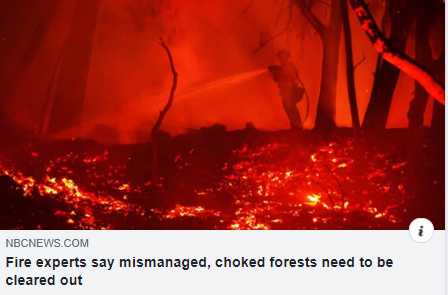Producing Green Hydrogen and Renewable Natural Gas by Thinning California’s Forests

From NBC News:
For decades, federal, state and local agencies have prioritized fire suppression over prevention, pouring billions of dollars into hiring and training firefighters, buying and maintaining firefighting equipment and educating the public on fire safety. But as climate change continues to fuel dry conditions in the American West, many experts say it’s long past time to shift the focus back to managing healthy forests that can better withstand fire and add to a more sustainable future.
Keeping the Forest Open and Thin
(The article continues) “Fires have always been part of our ecosystem,” said Mike Rogers, a former Angeles National Forest supervisor and board member of the National Association of Forest Service Retirees. “Forest management is a lot like gardening. You have to keep the forest open and thin.”
Enter Yosemite Clean Energy
Here’s where one of 2GreenEnergy’s key clients, Yosemite Clean Energy, comes in. We’re proud to work for this company on the forefront of building and operating biomass gasification facilities that convert forest waste into green hydrogen, with renewable natural gas as a co-product.
Over 65 million tons of wood biomass is wasted in California alone per year, of which 35 million tons are economically viable. The State of California and the Federal United States Forest Service have jointly set goals to fuel hazard reduction, by thinning a million acres of forest timberlands annually. This will help to bring California back into a lower fuel hazard state and mitigate the threat of catastrophic wildfires, which have plagued the state over the past decade and continue to threaten lives, property and the environment.
There are several aspects of these projects that make them unique:
- Their implementation of gasification technology that produces 43% more energy output per unit of feedstock than conventional approaches.
- The use of forest waste wood as feedstock. This makes use of biomass that would either a) rot, releasing CO2 and methane into the atmosphere, or b) burn in California’s even more troublesome wildfires.
- The entire enterprise of gasifying biomass to generate hydrogen and RNG, though not unique, represents cutting-edge technology in terms of the phasing out of fossil fuels in favor of clean energy.
Biofuels and Environmentalism
As mentioned, biofuels are, at the very least, carbon neutral, meaning that they release no more CO2 into the atmosphere than the life forms from which they are made had recently absorbed. There are several concerns driving the intense level of interest we see in this space, of which global warming is only one. Others include:
- Ocean acidification, the lowering of the pH of the world’s largest bodies of water to the point that all animal life (except jellyfish) will cease to exist over the coming century.
- Loss of biodiversity, which impedes the development of new vaccines and other drugs, while raising the risk of extinction. Scientists predict that more complex food webs will be less vulnerable to extinction cascades because there is a greater chance that other species can step in and buffer against the effects of species loss.
- Disease and death, including the million+ people who die every year because of the inhalation of the aromatics associated with the world’s consumption of fossil fuels.
2GreenEnergy’s Mission: Improving Environmental Conditions
Yosemite Clean Energy is just one example of a client company whose operations make the world a better and cleaner place to live. Our assisting in Yosemite’s expansion is already making a material improvement in the habitability of the entire West Coast of the United States.
